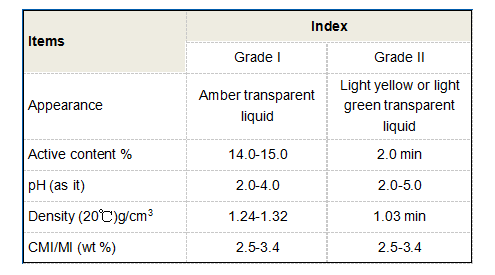coagulation flocculation
Coagulation and Flocculation Essential Processes in Water Treatment
Coagulation and flocculation are critical processes in water treatment, playing an essential role in the removal of impurities and ensuring water quality. These processes are widely utilized in municipal water treatment facilities and various industrial applications. Understanding the principles and mechanisms underlying coagulation and flocculation can help us appreciate their significance in maintaining safe and clean water supply systems.
Understanding Coagulation
Coagulation is the first step in the water treatment process, which involves the addition of chemicals known as coagulants to the water. These coagulants are typically charged particles that neutralize the negative charges of suspended particles, such as dirt, silt, and microorganisms. Common coagulants include aluminum sulfate, ferric chloride, and polyaluminum chloride. When these chemicals are added to water, they quickly dissociate into positively charged ions, which promote the aggregation of particles.
The process begins with rapid mixing, allowing the coagulant to interact with the suspended particles. As the particles come together, they form micro-flocs—small clumps of particles that are the precursors to larger flocs. This initial stage is crucial as it sets the stage for more significant aggregation to occur.
The Flocculation Process
Following coagulation, the next step is flocculation, a slower process where the micro-flocs collide and stick together to form larger flocs. This is typically achieved through gentle mixing and increased retention time, allowing the micro-flocs to grow in size and density. Flocculation aids in the removal of pathogens, organic matter, and other undesirable substances found in water.
Flocculation tanks play a vital role in this process. Here, water containing micro-flocs is gently stirred to enhance the collision and adhesion of particles. The effectiveness of flocculation can be influenced by various factors, including the type of coagulant used, the pH of the water, temperature, and mixing speed. It is essential for water treatment operators to closely monitor these parameters to maximize the efficiency of floc formation.
Separation and Removal
coagulation flocculation

Once flocs have formed, the next step is to separate them from the water. This is usually accomplished through sedimentation or flotation. In the sedimentation process, the larger flocs settle to the bottom of the treatment tank due to gravity, forming a sludge blanket. This sludge can then be removed and disposed of appropriately.
In contrast, flotation employs the introduction of air bubbles into the water, causing the flocs to rise to the surface for easy removal. This method is particularly useful for treating waters with low-density flocs that may not settle efficiently.
The removal of flocs not only improves water clarity but also significantly reduces the concentration of harmful contaminants, including bacteria, viruses, and heavy metals.
Importance in Environmental Protection
The significance of coagulation and flocculation extends beyond just drinking water treatment. These processes are also vital in managing wastewater and stormwater runoff. Effective removal of suspended solids, nutrients, and pathogens helps protect aquatic ecosystems, enhances public health, and ensures compliance with environmental regulations.
Additionally, advances in coagulation and flocculation technology have led to the development of more efficient and sustainable practices. Innovations in coagulant formulations, automation of treatment processes, and advancements in monitoring systems help water treatment facilities optimize their operations and reduce chemical usage.
Conclusion
Coagulation and flocculation are fundamental processes in water treatment that significantly enhance the quality of water supplied to communities. By facilitating the removal of suspended particles and contaminants, these processes contribute to public health safety and environmental sustainability. As technology continues to advance, the efficiency and effectiveness of coagulation and flocculation methods will only improve, ensuring that clean and safe water remains accessible to all. Understanding and investing in these critical processes is essential for the future of safe water supply systems worldwide.
-
Understanding Polycarboxylic Acids: Properties, Applications, and Future PotentialNewsJul.28,2025
-
Scale Inhibitor Explained: How to Protect Your System from Limescale and Hard Water DamageNewsJul.28,2025
-
Scale and Corrosion Inhibitors: Essential Chemicals for Industrial Water System ProtectionNewsJul.28,2025
-
Polyaspartic Acid: A Biodegradable Polymer for Sustainable ChemistryNewsJul.28,2025
-
Isothiazolinones: A Versatile Antimicrobial Class with Industrial Power and Regulatory ChallengesNewsJul.28,2025
-
A Deep Dive into 2-Phosphonobutane-1,2,4-Tricarboxylic Acid (PBTC)NewsJul.28,2025





